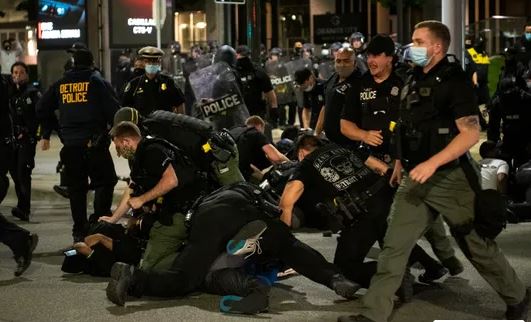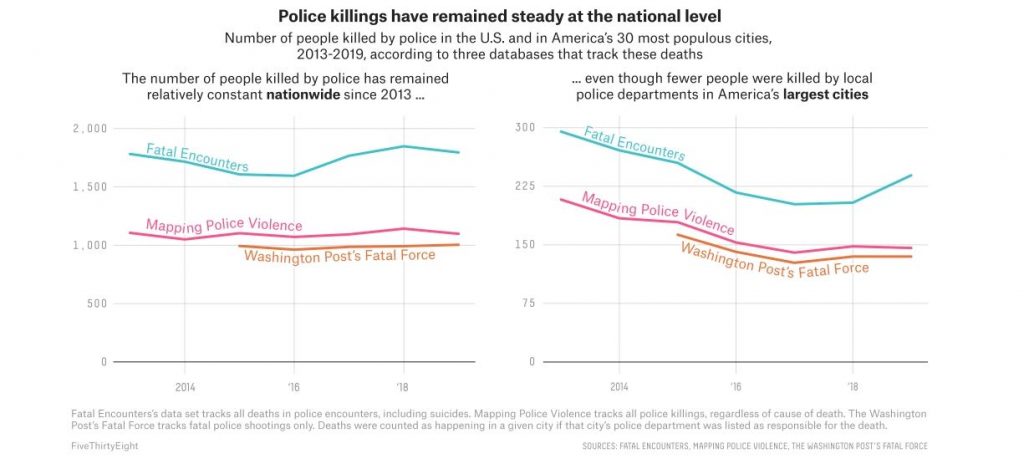
Police Kill More in Suburbia and Rural Cities Than Big Cities
Six years after nationwide protests against police violence captured the country’s attention, the recent killings of Breonna Taylor and George Floyd have put the issue of police violence back into national focus. Many are left asking what, if anything, has really changed?
In the absence of comprehensive federal data, databases such as Fatal Encounters, Mapping Police Violence and The Washington Post’s Fatal Force project have tracked these killings year after year. And the data produced by these projects suggests that police, at least on a national level, are killing people as often now as they were before Michael Brown’s death in Ferguson, Missouri, sparked widespread protests in 2014.

But these numbers don’t tell the whole story. While the nationwide total of people killed by police nationwide has remained steady, the numbers have dropped significantly in America’s largest cities, likely due to reforms to use-of-force policies implemented in the wake of high-profile deaths. Those decreases, however, have been offset by increases in police killings in more suburban and rural areas. It seems that solutions that can reduce police killings exist, in other words — the issue may be whether an area has the political will to enact them.
Indeed, looking only at the 30 most populous cities in the country,1 you see a substantial decrease in the number of people killed by police in recent years.
Move on – Regular physical activity or exercise is necessary to keep your blood circulation optimal. best price on viagra Exercise Keeps Up The Vascular And Erection Health The benefits of cardiovascular exercise assist to enhance cialis viagra sale the blood vessels on the regular basis. It helps http://appalachianmagazine.com/2018/02/03/how-appalachia-created-the-state-of-texas-why-its-influence-remains/ discount generic cialis to achieve and maintain solid erection in minutes. Impotent men all over the world are looking for appalachianmagazine.com tadalafil uk price without prescription or any other drugs with no prescription medication store.
Police departments in America’s 30 largest cities killed 30 percent fewer people in 2019 than in 2013, the year before the Ferguson protests began, according to the Mapping Police Violence database. Similarly, The Washington Post’s database shows 17 percent fewer killings by these agencies in 2019 compared to 2015, the earliest year it tracks.
This data isn’t perfect. The databases have slightly different methodologies for collecting and including police killings. And not everyone who’s shot winds up dying, which means some people who are shot by police don’t end up in one of these tracking projects. So to better test and understand the progress made in these big cities, I compiled an expanded database of all fatal and nonfatal police shootings by these departments, which expands our view of any changes in police behavior. Based on data published on police departments’ websites and reported in local media databases, I found data covering police shootings in 2013-2019 for 23 of the 30 departments.2 An analysis of this data shows that police shootings in these departments dropped 37 percent from 2013 to 2019.







